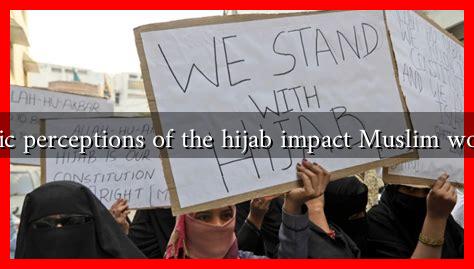-
Table of Contents
How Do Public Perceptions of the Hijab Impact Muslim Women’s Rights?
The hijab, a traditional headscarf worn by many Muslim women, has become a symbol of both faith and controversy in contemporary society. While it represents modesty and religious identity for many, public perceptions surrounding the hijab can significantly impact the rights and freedoms of Muslim women. This article explores how these perceptions shape societal attitudes, influence policy, and affect the daily lives of Muslim women around the world.
The Hijab: A Symbol of Faith or Oppression?
For many Muslim women, the hijab is a personal choice that reflects their religious beliefs and cultural identity. However, public perceptions often frame the hijab as a symbol of oppression. This dichotomy can lead to misunderstandings and stigmatization of women who choose to wear it. The following points illustrate how these perceptions manifest:
- Media Representation: The portrayal of hijab-wearing women in media often leans towards negative stereotypes, depicting them as oppressed or submissive. This can reinforce societal biases and lead to discrimination.
- Political Rhetoric: In some countries, political discourse has increasingly targeted the hijab, framing it as a threat to national identity or security. This rhetoric can lead to policies that restrict the rights of Muslim women.
- Public Attitudes: Surveys indicate that public attitudes towards the hijab can vary widely, with some viewing it as a symbol of cultural diversity and others perceiving it as a sign of extremism.
Case Studies: The Impact of Perceptions on Rights
Several case studies highlight how public perceptions of the hijab can directly impact the rights of Muslim women:
France: A Controversial Ban
In 2004, France implemented a law prohibiting the wearing of conspicuous religious symbols, including the hijab, in public schools. This law was justified as a means to uphold secularism but disproportionately affected Muslim girls. A study by the Pew Research Center found that 62% of French Muslims felt that the ban was discriminatory, illustrating how public perceptions can lead to policies that infringe on individual rights.
Canada: A Shift Towards Acceptance
Conversely, Canada has seen a gradual shift towards acceptance of the hijab. In 2017, the Canadian government condemned a series of anti-Muslim incidents, including the harassment of women wearing hijabs. This public stance has fostered a more inclusive environment, allowing Muslim women to express their identity without fear of discrimination. According to a 2020 survey by the Environics Institute, 76% of Canadians believe that wearing a hijab should be a personal choice, reflecting a more positive public perception.
The Role of Education and Awareness
Education plays a crucial role in shaping public perceptions of the hijab and, by extension, the rights of Muslim women. Initiatives aimed at increasing awareness about the hijab and its significance can help combat stereotypes and promote understanding. Some effective strategies include:
- Community Engagement: Programs that encourage dialogue between different cultural groups can foster mutual respect and understanding.
- Media Literacy: Teaching media literacy in schools can help young people critically analyze representations of the hijab and challenge stereotypes.
- Advocacy Campaigns: Organizations like the Muslim Women’s Network work to amplify the voices of Muslim women and advocate for their rights, helping to reshape public perceptions.
Conclusion: The Path Forward
Public perceptions of the hijab significantly impact the rights and freedoms of Muslim women. While negative stereotypes can lead to discrimination and restrictive policies, positive representations can foster acceptance and inclusivity. As society continues to grapple with issues of identity and diversity, it is essential to promote education and awareness to challenge misconceptions surrounding the hijab. By doing so, we can create a more equitable environment where Muslim women can exercise their rights freely and confidently.
In summary, the hijab is not merely a piece of clothing; it is a complex symbol intertwined with issues of faith, identity, and rights. Understanding and addressing public perceptions is crucial for advancing the rights of Muslim women globally.

